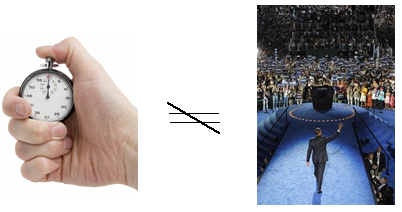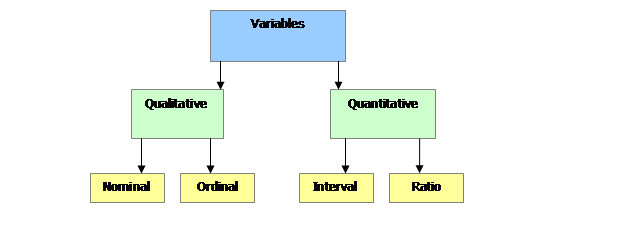
Organizing and Describing Data
Statistics & Risk Management
Before we can look at these procedures, we should understand what data is and where it comes from. We can start with the variable .
.
When conducting research, experimenters often manipulate variables unless they are constants.These manipulated variables are called Independent Variables (IV).
For example, an experimenter might compare the effectiveness of four types of antidepressants. In this case, the variable is "type of antidepressant." The experiment seeks to determine the effect of the independent variable on relief from depression.
In this example, relief from depression is called a dependent variable (DV) . In general the independent variable
. In general the independent variable is manipulated by the experimenter and its effects on the dependent variable are observed. We call this measurement the raw score. Once the data are collected, they make up a data set or distribution
is manipulated by the experimenter and its effects on the dependent variable are observed. We call this measurement the raw score. Once the data are collected, they make up a data set or distribution . More information on describing a distribution will be provided in a later section.
. More information on describing a distribution will be provided in a later section.
There are two major types of variables:
1. Quantitative
 or discrete
or discrete
2. Qualitative
Note: Some qualitative variables have no logical order (religion); some have a logical order (university classification: freshman, sophomore, etc.); and some variables may be quantitative or qualitative, depending on how the data are collected and analyzed (age in years versus age classification such as 18-25, 26-35, etc.)
Now a little more about the dependent variable. Exactly how the measurement of the DV is carried out depends on the type of variable involved in the analysis. Different types are measured differently, meaning that the type of data we collect will dictate the type of analysis that we can perform. To measure the time taken to respond to a stimulus, you might use a stop watch. Stop watches are of no use, of course, when it comes to measuring someone's attitude toward a political candidate, or for measuring demographics or race.

Although procedures for measurement differ in many ways, they can be classified using a few properties of our numbering system . These classifications are called "scale types," or just "scales," and they are dependent on the absence or presence of the following properties:
. These classifications are called "scale types," or just "scales," and they are dependent on the absence or presence of the following properties:
A. Identity
B. Magnitude
C. Equal intervals
D. True Zero
Scales of Measure
There are four different scales of measurement. They are listed below in order from simplest to most complex
to most complex :
:
A. Nominal

B. Ordinal - Same characteristics as Nominal scale plus the following:
C. Interval - Same characteristics as Nominal and Ordinal scale plus the following:
D. Ratio - Same characteristics as Nominal, Ordinal, and Interval scale plus the following:


Note: Sometimes the scale of variables is unclear. Psychological constructs , for example, are typically considered to be interval scales due to the fact that they are invented concepts even though they are often used in analysis as ratio.
, for example, are typically considered to be interval scales due to the fact that they are invented concepts even though they are often used in analysis as ratio.
Test Your Knowledge - Use the activity below to make sure you understand the terminology in this section.
 Show/hide comprehension question...
Show/hide comprehension question...